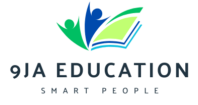Traditional Educational Institution Vs. Modern One: What is a Traditional Education Institution?
July 7, 2023 | by Chinos

Education plays a vital role in shaping individuals’ lives and societies as a whole. Over the years, the field of education has undergone significant transformations, with traditional educational institutions facing new challenges from modern alternatives. In this article, we will explore the differences between traditional and modern education institutions, highlighting their distinct characteristics, approaches, and potential benefits. By understanding these differences, we can gain valuable insights into the changing landscape of education.
Overview of Traditional Educational Institutions
Traditional educational institutions have been the backbone of formal education for centuries. These institutions, such as public and private schools, have established structures and systems deeply rooted in history and tradition. They typically follow a standardized curriculum, offer face-to-face classroom instruction, and have a hierarchical structure with teachers as the primary source of knowledge.
One of the key features of traditional educational institutions is their emphasis on discipline, order, and conformity. Students often follow a fixed timetable, attend classes in specific physical locations, and conform to predetermined rules and regulations. Standardized assessments, such as exams and quizzes, are common, and the focus is primarily on academic achievements.
Characteristics of Modern Education Institutions
Modern education institutions have emerged as alternatives to traditional schools, driven by technological advancements and evolving pedagogical theories. These institutions, which include online platforms, charter schools, and alternative education centers, offer flexible learning environments and innovative approaches to education.
One prominent characteristic of modern education institutions is their use of technology. Online platforms enable students to access learning materials anytime and anywhere, breaking the barriers of physical classrooms. Additionally, modern institutions often employ interactive tools, multimedia resources, and adaptive learning systems to cater to diverse learning styles and individual needs.
Flexibility is another key aspect of modern education institutions. Unlike traditional schools, which typically adhere to rigid schedules and fixed locations, modern institutions embrace personalized learning plans and flexible timetables. Students have the freedom to progress at their own pace, choose from a variety of subjects, and explore interdisciplinary areas of interest.
Approaches in Traditional and Modern Education Institutions
Traditional education institutions typically adopt a teacher-centered approach, where the teacher serves as the primary authority figure and imparts knowledge to the students. Classroom instruction and lectures are the main methods of teaching, with limited room for student participation and active engagement.
In contrast, modern education institutions often employ student-centered approaches. These approaches prioritize student engagement, critical thinking, and problem-solving skills. Students are encouraged to participate actively in their learning process through group discussions, project-based learning, and hands-on experiences. The role of the teacher in modern institutions is more of a facilitator, guiding and supporting students as they explore and construct knowledge.
Benefits of Traditional Education Institutions
Traditional education institutions offer several benefits that have stood the test of time. The structured environment and established routines provide stability and a sense of order for students. The physical presence of classmates and teachers fosters social interactions, collaboration, and the development of interpersonal skills. Moreover, traditional institutions often have a long history and a strong alumni network, offering valuable connections and opportunities in various fields.
Benefits of Modern Education Institutions
Modern education institutions bring a fresh perspective to the field of education, offering unique advantages that cater to the changing needs of students and society. The flexibility and accessibility of online platforms enable individuals from diverse backgrounds and geographical locations to access quality education. Modern institutions also encourage self-directed learning, empowering students to take control of their education and pursue their interests and passions.
In addition, modern education institutions often leverage technology and digital tools to enhance the learning experience. Interactive simulations, virtual reality, and online collaboration platforms create immersive and engaging learning environments, promoting creativity and innovation. Furthermore, the personalized nature of modern education allows for individualized support, catering to students’ specific strengths, weaknesses, and learning styles.
Conclusion
The landscape of education is continually evolving, and traditional and modern education institutions each have their unique strengths and characteristics. Traditional institutions provide stability, structure, and a sense of tradition, while modern institutions offer flexibility, accessibility, and innovative approaches. It is essential to recognize that the optimal educational experience may vary for different individuals and circumstances. By understanding the differences between traditional and modern education institutions, we can make informed decisions and create a learning environment that best suits our needs and aspirations.
RELATED POSTS
View all



